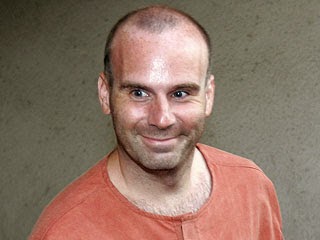“Some of our most vulnerable children also face the threat of being victimized by commercial sexual exploitation. Runaways, throwaways, sexual assault victims, and neglected children can be recruited into a violent life of forced prostitution.”
– Deputy Attorney General James Cole speaks at the National Strategy Conference on Combating Child Exploitation in San Jose, California, May 17, 2011.
The Prostitution of Children
It is illegal to lure, transport, or obtain a child to engage in prostitution or any illegal sexual activity. Children involved in this form of commercial sexual exploitation are victims. Offenders of this crime, also commonly referred to as traffickers or pimps, recruit, entice, or capture children in order to sell them for sex in exchange for cash, goods, or in– kind favors. Under federal law, the prostitution of children is considered a form of human trafficking, also referred to as sex trafficking. Sex trafficking is a lucrative industry, and criminals traffic children just as they would traffic drugs or other illegal substances. This is a serious crime under federal law, and convicted offenders face serve statutory penalties. (For more information, see Citizen's Guide to Federal Law on the Prostitution of Children).
Citizen's Guide to U.S. Federal Law on the Prostitution of Children
18 U.S.C § 1591- Sex trafficking of children or by force, fraud, or coercion
18 U.S.C. § 2421- Transportation generally
18 U.S.C. § 2422- Coercion and enticement
18 U.S.C. § 2423- Transportation of minors
18 U.S.C. § 2425- Use of interstate facilities to transmit information about a minor
The prostitution of children is prohibited by 18 U.S.C. § 1591. This statute makes it a federal offense to knowingly recruit, entice, harbor, transport, provide, obtain, or maintain a minor (defined as someone under 18 years of age) knowing or in reckless disregard of the fact that the victim is a minor and would be caused to engage in a commercial sex act. “Commercial sex act” is defined very broadly to include “any sex act, on account of which anything of value is given to or received by any person.” In other words, it is illegal both to offer and to obtain a child, and cause that child to engage in any kind of sexual activity in exchange for anything of value, whether it be money, goods, personal benefit, in-kind favors, or some other kind of benefit. Section 1591 also makes it a crime for individuals to participate in a business venture that obtains minors and causes them to engage in commercial sex acts.
Section 1591 is called “Sex trafficking of children or by force, fraud, or coercion.” Most people think of “trafficking” as involving movement across state or international borders. However, Section 1591 does not require proof that either the defendant or victim crossed state or international lines.
When the victim is a minor, Section 1591 does not require proof that the defendant used force, threats of force, fraud, or coercion, or any combination of those means, to cause the minor to engage in a commercial sex act.
Section 1591 applies equally to American children (U.S. citizens or residents) who are prostituted within the United States, as well as foreign nationals (persons not a U.S. citizen or resident) who are brought into the United States and are then caused to engage in prostitution. The law also criminalizes any person who conspires or attempts to commit this crime.
If the victim was under the age of 14 or if force, fraud, or coercion were used, the penalty is not less than 15 years in prison up to life. If the victim was aged 14-17, the penalty shall not be less than 10 years in prison up to life. Anyone who obstructs or attempts to obstruct the enforcement of this statute faces as many as 20 years imprisonment. Defendants who are convicted under this statute are also required to pay restitution to their victims for any losses they caused.
In addition, 18 U.S.C. §§ 2421 – 2423 criminalize a variety of activities pertaining to the prostitution of children. For example, Section 2421 and 2423(a) make it a crime to transport an individual or a minor across state lines for the purpose of prostitution or any other illegal sexual activity. Unlike 18 U.S.C. § 1591, both of those statutes do require proof that the victim crossed a state line. If a minor is transported across state lines in violation of Section 2423(a), the penalty is not less than 10 years in prison, up to life.
Section 2422(b) makes it a crime to use the U.S. Mail or certain technology, such as the Internet or the telephone (whether mobile or a land line), to persuade, induce, entice, or coerce a minor to engage in prostitution or any other illegal sexual activity. For example, it is a federal crime for an adult to use the mail, a chat room, email, or text messages to persuade a child to meet him or her to engage that child in prostitution or other illegal sexual activity. Under this statute, it is not necessary to prove that either the defendant or the victim crossed state lines. The penalty for this offense is not less than ten years in prison, up to life. Finally, 18 U.S.C § 2425 makes it illegal for any person to use the mail, telephones, or the Internet, to knowingly transmit the name, address, telephone number, social security number, or email address of a child under the age of 16 with intent to entice, encourage, offer, or solicit any person to engage in criminal sexual activity. This offense is punishable by up to five years in prison.
International Sex Trafficking of Minors
One form of sex trafficking involves the cross border transportation of children. In these situations, traffickers recruit and transfer children across international borders in order to sexually exploit them in another country. The traffickers can be individuals working alone, organized crime groups, enterprises, or networks of criminals working together to traffic children into prostitution across country lines.
This form of sex trafficking is a problem in the United States, and recovered victims originate from all over the world, including less-developed areas, such as South and Southeast Asia, Central America, and South America, to more developed areas, such as Western Europe. Once in the United States, a child may be trafficked to any or multiple states within the country. These victims are often trafficked far from home, and thrown into unfamiliar locations and culture. They may be given a false passport or other documentation to conceal their age and true identity. They may also struggle with the English language. All these factors make it extremely difficult for these children to come forward to law enforcement.
In addition, many foreign victims originate from nations that suffer from poverty, turbulent politics and unstable economics. Children from these countries are seen as easy targets by traffickers because they face problems of illiteracy, limited employment opportunities, and bleak financial circumstances in their home country. It is not uncommon for a foreign victim to be coerced by a trafficker under false pretenses. The child is told that a better life or job opportunity awaits them in the United States. However, once in the United States they are introduced into a life of prostitution controlled by traffickers.
Domestic Sex Trafficking of Minors
The United States not only faces a problem of foreign victims trafficked into the country, but there is also a homegrown problem of American children being recruited and exploited for commercial sex. Under federal law, a child does not need to cross international or even state borders to be considered a victim of commercial sexual exploitation, and unfortunately, American children are falling victim to this crime within the United States.
Pimps and traffickers sexually exploit children through street prostitution, and in adult night clubs, illegal brothels, sex parties, motel rooms, hotel rooms, and other locations throughout the United States. Many recovered American victims are street children, a population of runaway or throwaway youth who often come from low income families, and may suffer from physical abuse, sexual abuse and family abandonment issues. This population is seen as an easy target by pimps because the children are generally vulnerable, without dependable guardians, and suffer from low self-esteem. Victims of the prostitution of children, however, come from all backgrounds in terms of class, race, and geography (i.e. urban, suburban, and rural settings).
Often in domestic sex trafficking situations, pimps will make the child victim feel dependent on prostitution for life necessities and survival. For example, a pimp will lure a child with food, clothes, attention, friendship, love, and a seemingly safe place to stay. After cultivating a relationship with a child and engendering a false sense of trust, the pimp will begin engaging the child in prostitution. It is also common for pimps to isolate victims by moving them far away from friends and family, altering their physical appearances, or continuously moving victims to new locations. In many cases, victims become so hardened by the environment in which they must learn to survive that they are incapable of leaving the situation on their own.
Child Victims of Prostitution
The term prostitution can delude or confuse one’s understanding of this form of child sexual exploitation. It is important to emphasize that the children involved are victims. Pimps and traffickers manipulate children by using physical, emotional, and psychological abuse to keep them trapped in a life of prostitution. It is not uncommon for traffickers to beat, rape, or torture their victims. Some traffickers also use drugs and alcohol to control them.
Technological advances, in particular the Internet, have facilitated the commercial sexual exploitation of children by providing a convenient worldwide marketing channel. Individuals can now use websites to advertise, schedule, and purchase sexual encounters with minors. The Internet and web-enabled cell phones also allow pimps and traffickers to reach a larger clientele base than in the past, which may expose victims to greater risks and dangers.
In addition, many child victims suffer from physical ailments, including tuberculosis, infections, drug addition, malnutrition, and physical injuries resulting from violence inflicted upon them. Venereal diseases also run rampant. Children may also suffer from short–term and long–term psychological effects such as depression, low self-esteem, and feelings of hopelessness.
CEOS’s Role
CEOS attorneys work with the High Technology Investigative Unit (HTIU), the Federal Bureau of Investigation (FBI), United States Attorney´s Offices around the country, and other state and local parties to investigate and prosecute cases arising under federal statutes prohibiting the prostitution of children. CEOS works to not only punish and jail offenders, but to protect the rights and welfare of the children involved.
In addition, CEOS maintains a coordinated, national-level law enforcement focus, and helps coordinates nationwide and international investigations and initiatives. CEOS attorneys travel all over the country to conduct trainings for investigators, law enforcement personnel and others involved in efforts to eradicate this crime. Moreover, CEOS designs, implements, and supports law enforcement strategies, legislative proposals, and policy initiatives relating to federal laws prohibiting the prostitution of children.
Source:
PROSECUTORIAL REMEDIES AND OTHER TOOLS TO END THE EXPLOITATION OF CHILDREN TODAY ACT OF 2003



